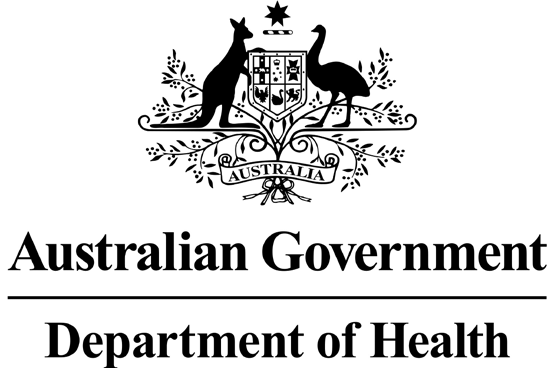
Department Reference: FOI 2877
Mr Josh Marks
via email:
xxxxxxxxxxxxxxxxxxxxxxxxx@xxxxxxxxxxx.xxx.xx
Dear Mr Josh Marks,
NOTICE OF DECISION UNDER SECTION 24A
OF THE FREEDOM OF INFORMATION ACT 1982
I refer to your request of 29 August 2021 to the Department of Health (the
department) seeking access under the
Freedom of Information Act 1982 (Cth) (the FOI
Act) to documents related to COVID-19. Your request is in the following terms:
1. Evidence that demonstrates detectable differences between Covid variants through
PCR testing - that is, how do you know what variant someone has?
2. How can the PCR test distinguish between normal flu virus and sars cov2 virus?
3. Are PCR test cycles set above the tolerance recommended by the WHO?
Information about COVID-19
SARS-CoV-2, the virus which causes COVID-19, is real. Multiple scientific studies
across the world demonstrate that highly reputable laboratory medicine experts
have isolated and sequenced the virus that causes COVID-19, demonstrating that
the virus exists, that it exists in variant forms, that it is different from the influenza
virus, and that it causes a disease that has resulted in more than 4.9 million deaths
worldwide in just over 21 months.
While the department is not the custodian of the scientific studies establishing the
existence of SARS-CoV-2, this research has informed the Australian Government’s
response to the pandemic. You can find those scientific studies in the public
domain.
The department is a government agency and does not conduct scientific studies or
laboratory testing for the SARS-CoV-2 in a laboratory. Diagnostic assays using
reverse transcriptase polymerase chain reaction (RT-PCR) are conducted by testing
laboratories throughout Australia. For more information, please see the Public
2
Health Laboratory Network (PHLN) guidance on laboratory testing for
SARS-CoV-2, which is available online:
https://www.health.gov.au/resources/publications/phln-guidance-on-
laboratory-testing-for-sars-cov-2-the-virus-that-causes-covid-19
In Australia, scientists at the Victorian Infectious Diseases Reference Laboratory at
The Peter Doherty Institute for Infection and Immunity were the first to isolate
SARS-CoV-2 outside of China, winning the 2020 MJA/MDA National Prize for
Excellence in Medical Research. This critical information was immediately shared
with local and overseas reference laboratories and major North American and
European virus culture collections. These peer-reviewed, evidence-based
publications provide scientific evidence for the existence of this deadly virus.
Attached to this email is an article published in the Daily Telegraph on
13 August 2021 that may be of interest to you.
Question 1 – Detection of Variants of SARS-CoV-2
All viruses, including SARS-CoV-2, change over time as part of their natural
evolution. A change may or may not give the virus a biological advantage. Existing
and emerging variants are constantly monitored using genomic surveillance to
detect those that pose or may pose an increased risk to human health.
In Australia, whole genome sequencing (WGS) of the SARS-CoV-2 genome is the
preferred way to determine the variant and mutation patterns of the virus, e.g.
Alpha, Delta, and Kappa variants. Some RT-PCR tests have been designed to
detect specific SARS-CoV-2 variants of concern. These tests can only identify the
specific variants they have been designed for.
In summary, if a SARS-CoV-2 positive result is detected by RT-PCR, the next step
is to genomically sequence the viral material in the sample to determine the
specific variant of the virus (e.g., Delta). In most jurisdictions an attempt is made to
sequence all positive SARS-CoV-2 samples in order to characterise the variant.
While the majority of cases are successfully characterised, not all can be. In
jurisdictions where community transmission of COVID-19 is established,
sequencing prioritisation strategies are employed.
Question 2 – Distinguishing between SARS-CoV-2 and the influenza virus
RT-PCR testing is a reliable and highly specific diagnostic tool. RT-PCR tests are
very sensitive and detect nucleic acid sequences in a respiratory sample that are
specific to the virus for which they have been designed. COVID-19 RT-PCR tests
are designed to look for and then amplify a target region of the viral genome
which is specific to the SARS-CoV-2 virus. No test is 100% perfect, but the
COVID-19 tests used in Australia are highly specific and are not likely to provide a
positive result for any other pathogen.
3
Some RT-PCR test kits available incorporate multiple pathogen targets for different
viruses. For example, these tests can diagnose infections like COVID-19 and
influenza at the same time and correctly differentiate between the two. This
approach can help to conserve resources, although the implementation of
multiplex test panels is dependent on a laboratories established workflow and
resourcing requirements.
Question 3 – Cycle Thresholds
During the testing process, the RT-PCR amplifies (or makes many copies of) a
highly specific target region of the SARS-CoV-2 genome so that it can be detected.
Each amplification reaction is known as a cycle. The cycle threshold (Ct) value of a
reaction is the cycle number when the fluorescence of a PCR product can be
detected above the background signal.
Each RT-PCR assay may have a different Ct value that is used for detecting
SARS-CoV-2. Ct values are device dependant and cannot be compared across
platforms. This means there is no 'set' Ct value to aim for across all platforms.
There are also nucleic acid amplification devices used for the diagnosis of
SARS-COV-2 infection which do not record a Ct value. For these reasons, it is
critical that test results be interpreted by a suitably qualified pathologist or medical
laboratory scientist in line with the instructions for use of the accredited test kit.
FOI decision
I am authorised under subsection 23(1) of the FOI Act to make decisions in relation
to Freedom of Information requests. I am writing to notify you of my decision in
response to your request.
The FOI Act provides a mechanism for individuals to request access to documents
held by relevant entities. It is not a mechanism for asking questions or seeking
information that the entity does not hold in documents.
Appropriate steps have been taken to find documents you have requested
including consultation with relevant departmental officers and searches of
departmental file management systems.
I am satisfied, on the basis of the consultation undertaken and the searches
conducted, that the department, including the Therapeutic Goods Administration,
does not hold any documents referred to in your request. This research and
information is available in the public domain as described above.
As a consequence, relying on section 24A of the FOI Act, I cannot provide access to
the documents you requested.
4
FOI review rights
If you are dissatisfied with my decision, you may apply for a review.
Internal review
Under section 54 of the FOI Act, you may apply for internal review of this decision.
In accordance with section 54B of the FOI Act, an application for internal review
must be made in writing within 30 days after the day you are notified of this
decision (or such further period as the department allows). To assist in the internal
review process, please provide reasons you consider the review of my decision is
necessary.
The internal review will be carried out by another officer of this department within
30 days of receipt of your application.
An application for an internal review should be addressed to:
Email:
xxx@xxxxxx.xxx.xx
Mail: FOI Unit (MDP 516)
Department of Health
GPO Box 9848
CANBERRA ACT 2601
Information Commissioner review
Alternatively, under section 54L of the FOI Act, you may apply to the Office of the
Australian Information Commissioner (OAIC) for review of my decision by the
Information Commissioner (IC).
In accordance with subsection 54S(1) of the FOI Act, an IC review application in
relation to a decision covered by subsection 54L(2) (access refusal decisions) must
be made in writing within 60 days after the day you are notified of this decision (if
you do not request an internal review).
More information about IC review is available on the OAIC website at:
https://www.oaic.gov.au/freedom-of-information/reviews/
The OAIC can be contacted by:
Phone: 1300 363 992
Email:
xxxxxxxxx@xxxx.xxx.xx
Complaints
If you are dissatisfied with action taken by the department, you may also make a
complaint.

5
Complaint to the department
Complaints to the department are covered by the department’s privacy policy. A
form for lodging a complaint directly to the department is available on the
department’s website:
https://www.health.gov.au/about-us/contact-us/complaints
Complaint to the IC
Information about making a complaint to the IC about action taken by the
department is available on the OAIC website:
https://www.oaic.gov.au/freedom-of-information/reviews-and-
complaints/make-an-foi-complaint/
Relevant provisions of the FOI Act
The FOI Act, including the provisions referred to in this letter, can be accessed
from the Federal Register of Legislation website:
https://www.legislation.gov.au/Details/C2021C00382
Contacts
If you require clarification of any of the matters discussed in this letter you should
contact the department’s Freedom of Information Unit a
t xxx@xxxxxx.xxx.xx.
Yours sincerely
Dr Marcelle Noja
Acting Assistant Secretary
Public Health and Surveillance Branch
27 October 2021

